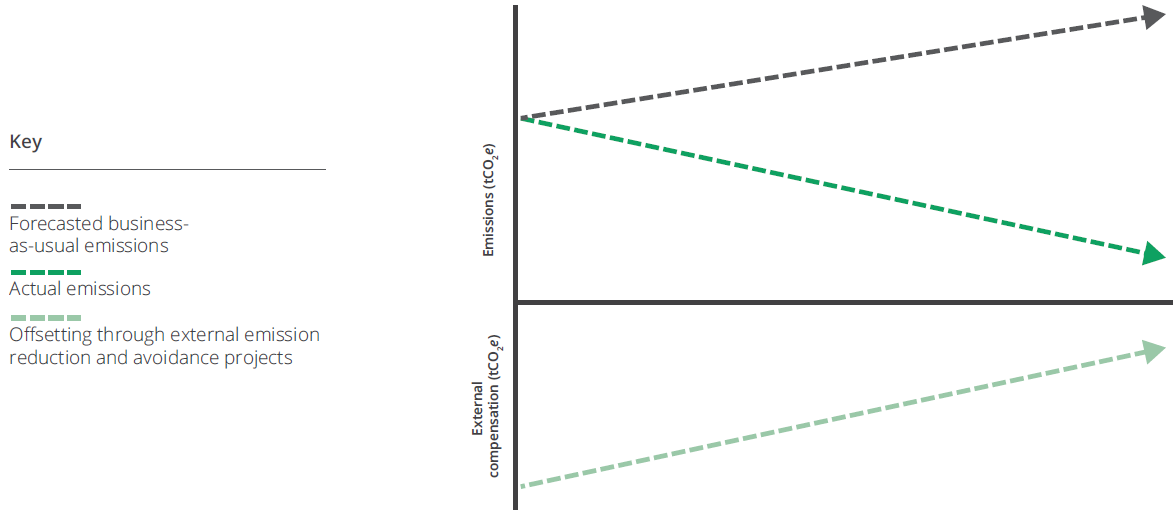The fourth step is to take actions that abate emissions of the subject and across the organization, accompanied by compensation of unabated emissions of the subject through purchase and retirement of qualifying environmental instruments – specifically carbon credits.
Overview of requirements
PART 1: Internal abatement
The organization should action a GHG abatement plan to deliver internal emission reductions for the subject and wider value chain in accordance with its near-term science-aligned reduction targets.
Achievement of internal emission reductions must be reported to the certifier.
In the case of one-off subjects, such as events, this should include consideration of emission-minimizing measures during the planning phase.
Technical Specification 4.1 outlines the precise requirements for internal abatement.
PART 2: External compensation
Unabated emissions for the subject and duration defined within the CarbonNeutral® certification must be compensated for through the purchase and retirement of eligible carbon credits. Reduction measures to achieve carbon neutrality is demonstrated in Figure 3.
Technical Specification 4.2 outlines the precise requirements for external compensation, including the applicable standards for carbon credits.
To achieve CarbonNeutral® certification, all carbon credits necessary to compensate the emissions of the defined subject (e.g., company, product, or activity) must be purchased prior to the certification being awarded.
This requirement is essential because it ensures the certification reflects a real, immediate, and verifiable commitment to addressing emissions. By compensating for unabated emissions in advance, companies demonstrate accountability and alignment with the principles of credible climate action.
When carbon credits are used towards the achievement of CarbonNeutral® certification in advance of their verification and issuance, the client must be provided with a contractual guarantee of delivery or replacement.
Carbon credits must be retired within 12 months from the delivery or purchase of the carbon credits, whichever is the later event. Where an organization procures additional carbon credits to address future certification periods, it may hold any excess carbon credits unretired until the certification period in which they are applied.
The CarbonNeutral certifier must confirm that a sufficient number of carbon credits has or will be retired on behalf of the organization seeking CarbonNeutral® certification or, the CarbonNeutral certifier must receive evidence from the party implementing retirement that retired credits are being applied to the subjects/time periods and cannot in any way be deemed to have been double counted.
Ex post carbon credits must be used for CarbonNeutral® certifications.
Figure 3: Reduction Measures to Achieve Carbon Neutrality
